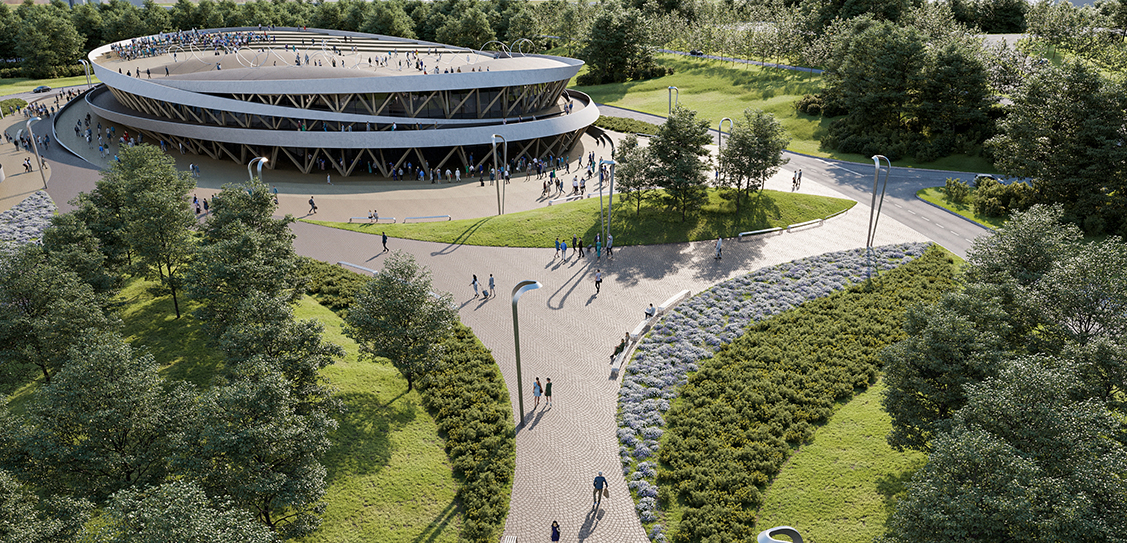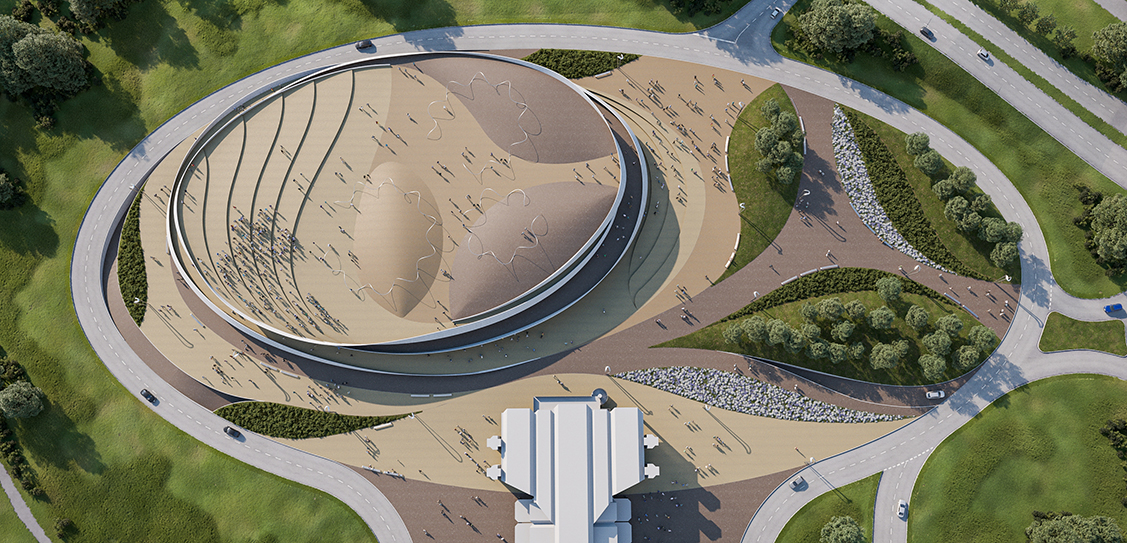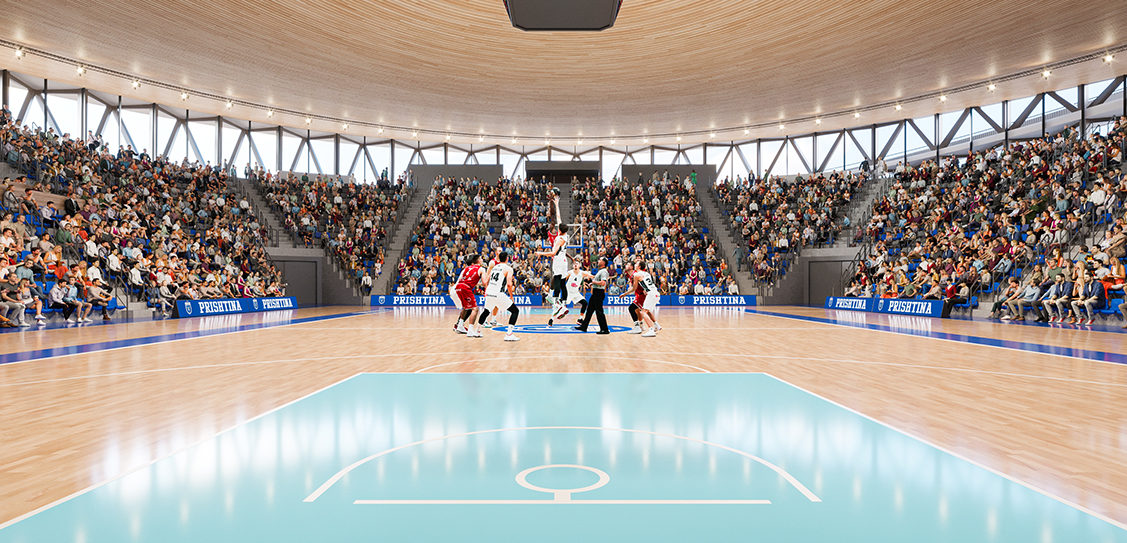To ensure the existing bus station continues to run at full capacity, the hall will be built within the elliptical traffic loop that runs around it. Its position in the northeast of the oval will also provide space for a public plaza that can be used by the surrounding communities from Kalabria and Dardania. The design of the various paved and green areas will give the plaza a recognisable character to encourage visitors.
The building will not have a dome roof, a typical feature of a sports hall, to avoid the structure becoming taller than the bus station. Lowering the building’s design by one floor also means that necessary service areas such as storage can be discreetly placed underground.
The creation of traffic and communication flows around the building was the main driver of the overall design concept. A circular spiral will be cut into the surface of the plaza and then pulled upwards to form a series of pathways around the building. A split double helix will allow for a large flow of people around the building and upwards, providing external access to all parts of the sports hall. There will be smaller pockets of public space at various intersections of the spiral, allowing for the placement of bars and restaurants that serve both the interior and exterior of the hall.
Inside the hall, there will be two possible seating arrangements. One with 3,500 seats which will allow for a handball court or three parallel basketball courts. With extendable tribunes the arrangement will be able to increase its capacity up to 5,000 spectators for high level basketball competitions.
The design includes several public and private spaces to house the audience as well as players, media professionals and staff members. The hall will have several entrances which differ in size and location to suit all events.
The structure of the building will be divided into two parts. The basement is constructed with perimeter and load bearing walls in reinforced concrete. Above ground, the façade ramps are supported by a triangular grid of steel columns that follow the irregular ellipsoid geometry. At the roof level, the steel columns support a compression ring which carries a cable tension roof above the main hall.



